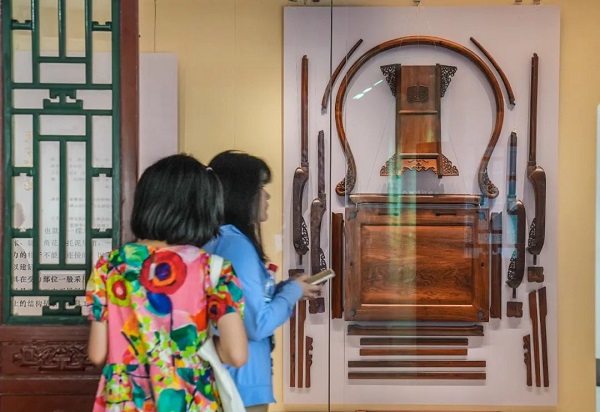
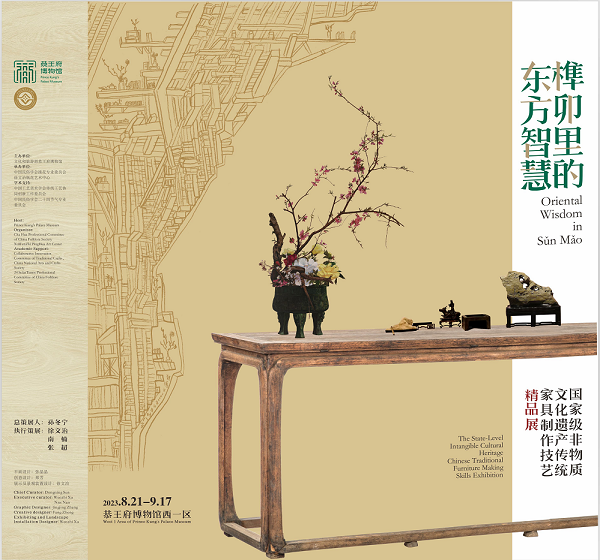
On Aug 21, the exhibition “Oriental Wisdom in Suǔn Mǎo (Mortise-and-Tenon Joints) - Traditional Furniture Making Techniques, a National ICH of China” opened at its West Sector 1.
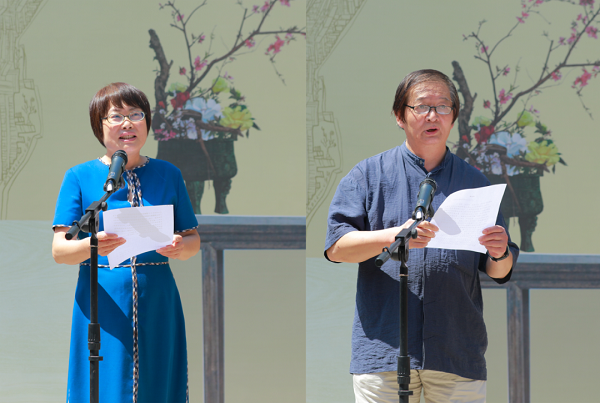
Photo combo of Wang Jing (L), vice director of Prince Kung’s Palace Museum, and Xu Jianping, a national representative inheritor of Ming-style furniture craftsmanship, delivering speeches at the opening ceremony
Organized by Prince Kung’s Palace Museum, the exhibition features representative work by inheritors of the intangible cultural heritage of furniture-making techniques from Beijing, Suzhou, and Guangdong, along with the Ming (1368-1644) and the Qing (1644-1911) furniture from the museum’s collection. The exhibition interprets the styles and cultural significance of traditional hardwood furniture from these three regions, guiding visitors into the traditional Chinese living spaces, through period rooms set up in the gallery.
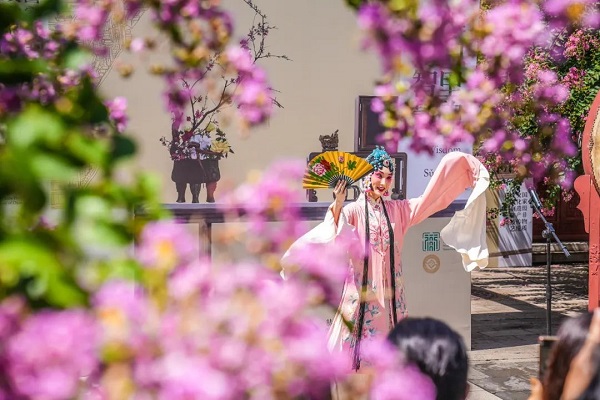
This exhibition is divided into five sections, showcasing more than 60 pieces (in sets) of exquisite furniture, complemented by paintings, calligraphy, flowers in vases, guqin zithers, incense tools, and distinctive antiques from the three regions. It explores the relationship between furniture and space through the static display, dynamic presentations, and live performances, aiming to create a space showcasing Chinese living aesthetics.
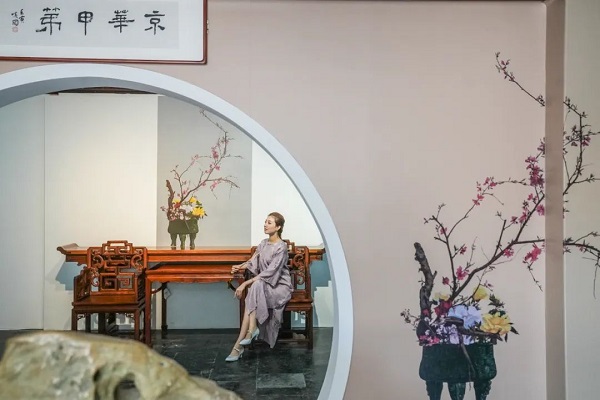
The first section demonstrates the structure of furniture's mortise-and-tenon joints, using disassembled furniture as a template to present the intricate design of these joints, allowing visitors to appreciate the craftsmanship and wisdom of artisans. Sections two through four show furniture pieces within the spaces created by the exhibition, reflecting the distinct styles of the three regions: Beijing furniture’s grace and grandeur, Suzhou's elegance and refinement, and Guangdong's opulence and uniqueness. The final section primarily features Ming and Qing furniture from the collection of Prince Kung’s Palace Museum, exploring the relationship between traditional spaces, furniture, and contemporary living spaces.

An academic seminar themed around contemporary predicaments, and revival of traditional Chinese lifestyles, will be held during the exhibition. It will bring together experts, scholars, inheritors of intangible cultural heritage, industry elites, and representatives from related businesses, to engage in in-depth discussions on various topics, such as the history and inheritance of the fine woodworking crafts on display.
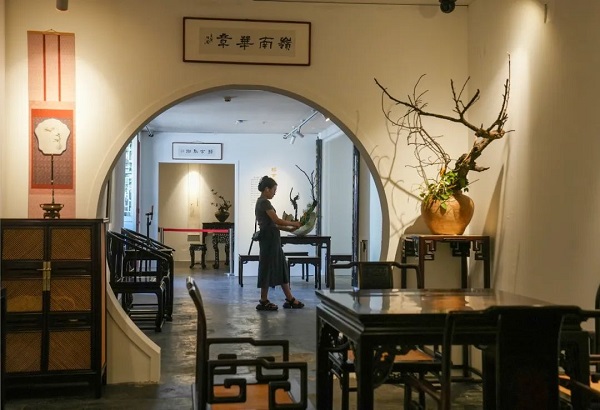
The exhibition will run until Sept 17, 2023 (closed Mondays).
